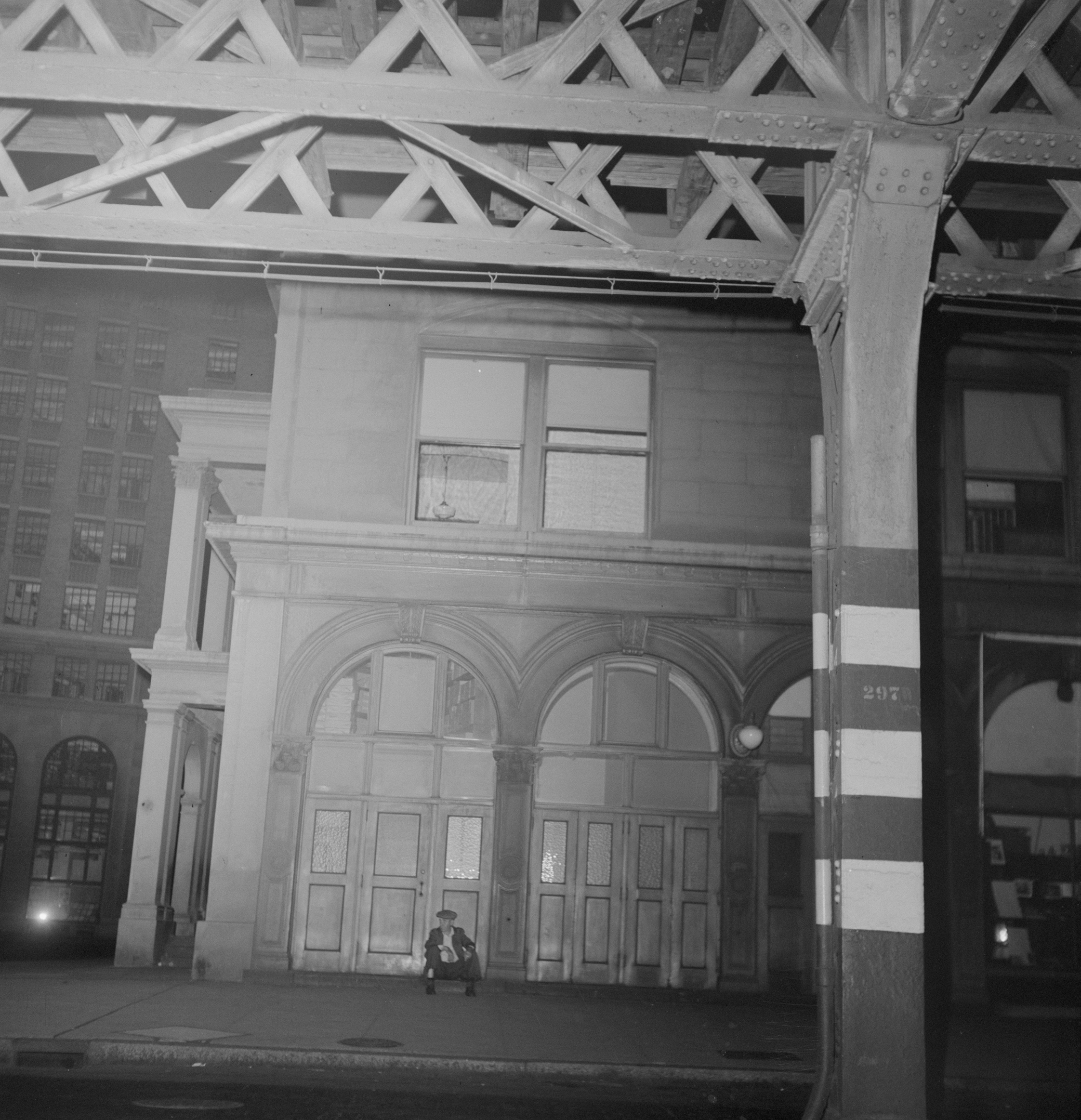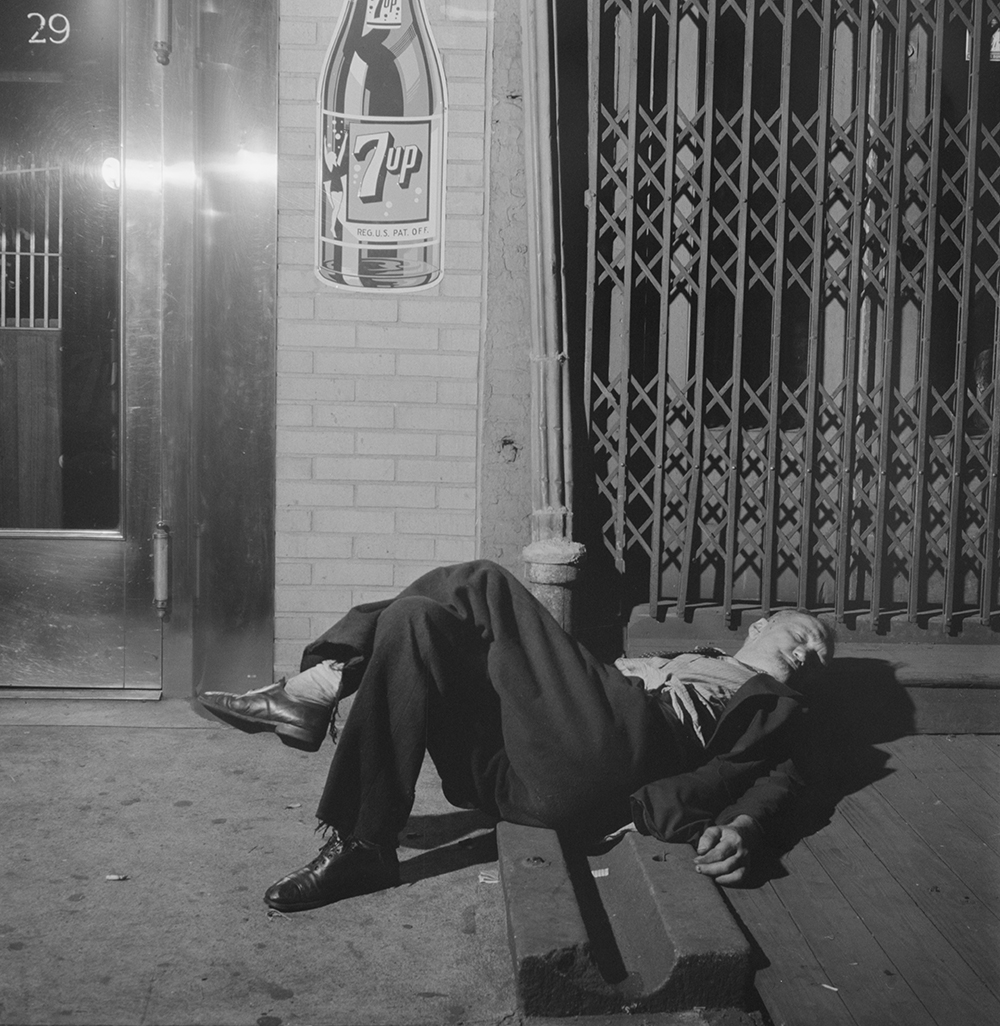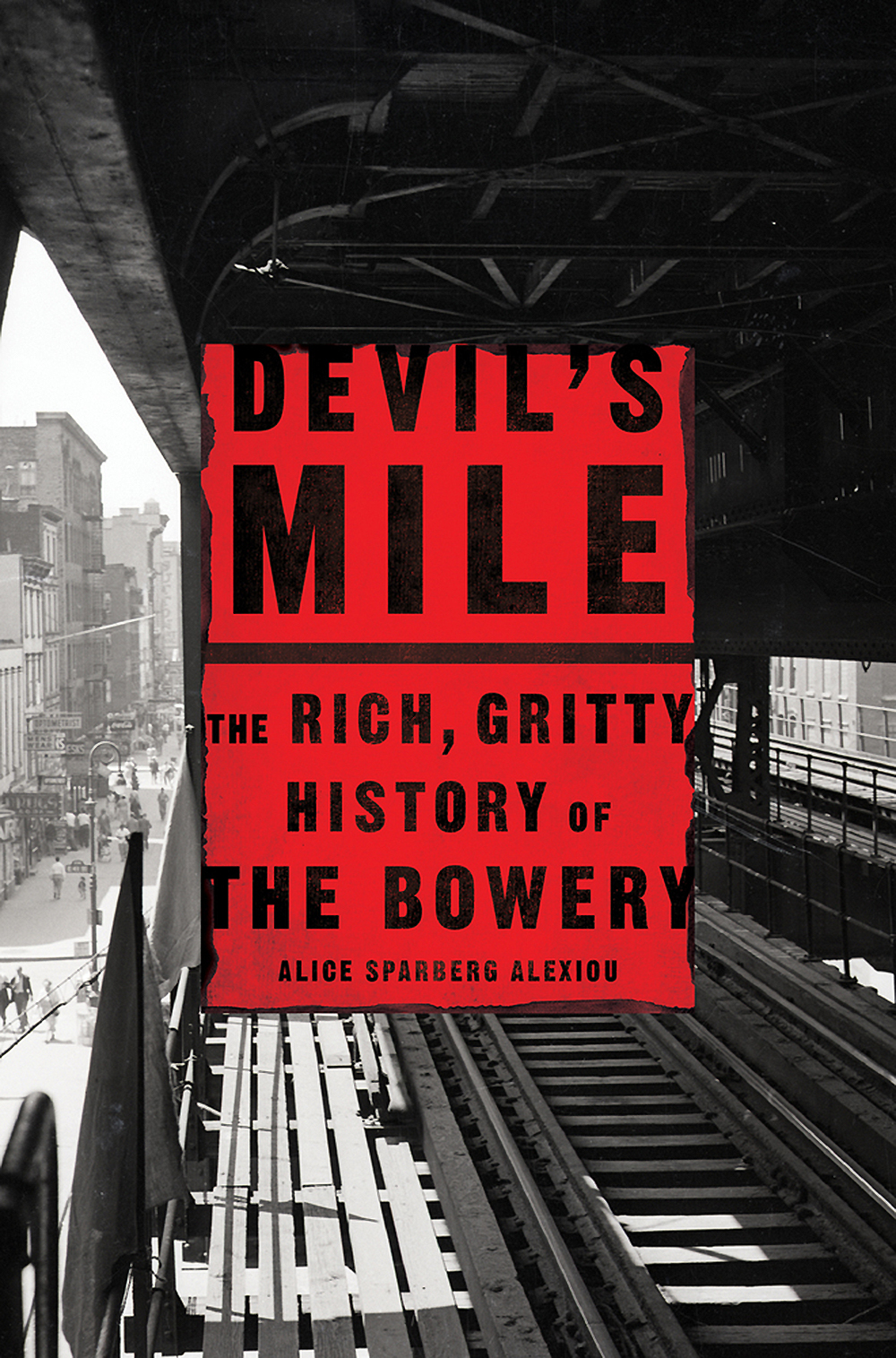
New York, New York. Bowery, near Cooper Union, about Midnight, 1942. Photograph by Marjory Collins. Library of Congress, Prints and Photographs.
Each issue of Lapham’s Quarterly, celebrating its tenth anniversary this year, addresses a theme—States of War, States of Mind, Food, Youth, Animals—by drawing on primary sources throughout history, finding the rhymes and dissonances in how these topics have played out and been perceived over the centuries. In this new series, we open up the sleuthing beyond our staff and four annual themes by letting historians and writers share what they have come across in their recent visits to the archives.
This week’s selection comes from Alice Sparberg Alexiou, author of Devil’s Mile: The Rich, Gritty History of the Bowery, out now from the St. Martin’s Press.

This picture was taken on the Bowery in 1942 by Marjory Collins for the U.S. Office of War Information. The man is not identified. He was one of the thousands of broken-down, alcoholic men who lived along the Bowery. They settled in right on the sidewalk, among others just like themselves: men running away from a world in which they could not find a place, who just wanted somewhere to be left alone and chug down Thunderbird. Bums was the word used then to describe these men, and the Bowery belonged to them.
Meanwhile, New York was wringing its hands over the so-called problem of the bums on the Bowery. These men were perceived as a blight upon the landscape. City officials, Robert Moses among them, sought ways to sweep them out of sight. Suggestions, all unfeasible, were put forth—one was to send them to a former women’s prison in upstate New York—and the bums remained.
Finally, a force more powerful than anybody could have imagined made its way into New York City: gentrification. That force is now grinding up the Bowery’s old structures and refitting the footprints with glass high-rises and trendy wine bars. Gentrification has also forced all the homeless people off the Bowery and dispersed them all over the city. You can see them everywhere, living on the sidewalks and begging in the subways. There are more homeless now in New York than ever in the history of the city. But because they are no longer concentrated along the Bowery, the homeless are more invisible than ever. You could say that the “problem” of the Bowery bum has been solved.

Want to read more? Here are some past posts from this series:
• Emily Ogden, author of Credulity: A Cultural History of U.S. Mesmerism
Anna Clark, author of The Poisoned City: Flint’s Water and the American Urban Tragedy
• Jeff Biggers, author of Resistance: Reclaiming an American Tradition
• Christopher Bonanos, author of Flash: The Making of Weegee the Famous
• Philip Dray, author of The Fair Chase: The Epic Story of Hunting in America
• Elaine Weiss, author of The Woman’s Hour: The Great Fight to Win the Vote
• Daegan Miller, author of This Radical Land: A Natural History of American Dissent
• Elizabeth Catte, author of What You Are Getting Wrong About Appalachia
• Ben Austen, author of High-Risers: Cabrini-Green and the Fate of American Public Housing